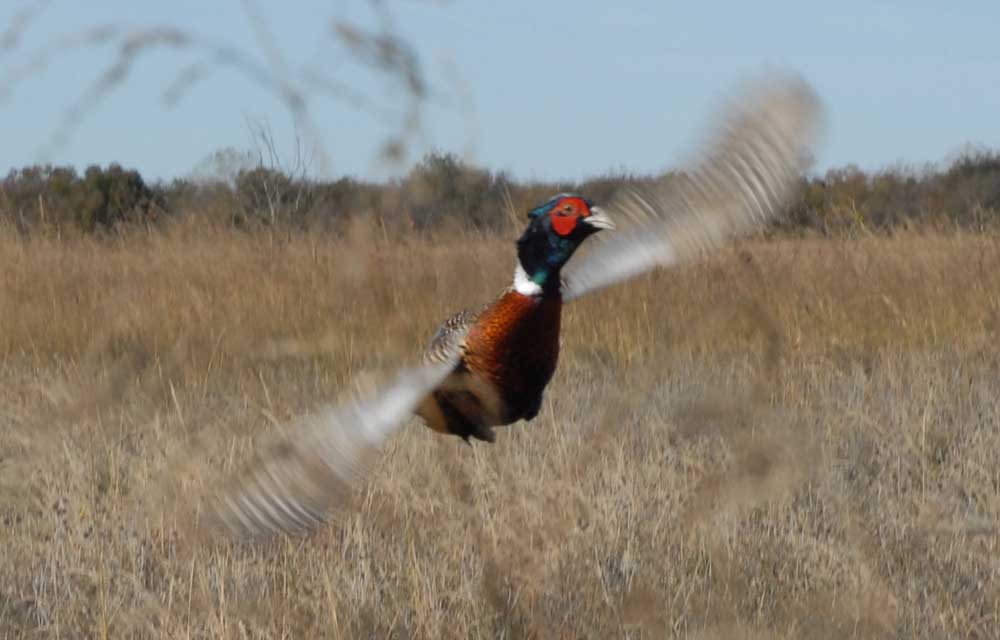Ring-Necked Rodeo: Panhandle Pheasant, hunter numbers continue to decline
Published 12:15 am Friday, November 15, 2024

- Ring-necked pheasant were introduced into Texas in the 1930s, but not released in the Panhandle until 1958. In the 1980s the birds attracted hunters to the region. (Steve Knight/Tyler Morning Telegraph)
It was in the 1980s when I first made the 450-mile drive from East Texas to Plainview to hunt wild pheasants in Texas.
Over the next decade-plus I made several return trips to Plainview, White Deer and other towns that dotted the Panhandle, and then I quit going. It was not because of a lack of interest in hunting the birds. Pheasants are truly one of the best game birds in appearance, challenge and table fare.
It was because of a lack of birds.
For a short period, pheasant were an economic boom to a number of small Panhandle towns. Maybe not on the scale deer hunting has been to places in the Hill Country, but they did bring in truckloads of hunters pulling dog trailers. Those hunters spent money at local stores, cafes, motels and gas stations, supplementing local farm economies.
Ring-necked pheasants are an Asian import that found their way into the U.S. in the 1880s, and into Texas along the coast in the 1930s at the Aransas National Wildlife Refuge. But the birds did not take hold in the state until migrants from Oklahoma and Kansas, along with a second attempt at stocking by private landowners and the U.S. Soil Conservation Service, placed the birds in the Panhandle and lead to an inaugural season in 1958 in Dallam County.
They are not an easy bird to hunt. Seldom would they hold for a dog like quail do. Instead, they would run through the fields always flushing just out of shotgun range. Texans being Texans, most devised a successful method that including a group of hunters that would walk a field from one end, pushing the birds toward blockers set up on the other end.
Walking through the stubble wasn’t easy, and a three-bird limit was a just reward.
The birds thrived with the wheat, corn and sorghum farming of the time, using adjacent Conservation Reserve Program layout fields as cover and nesting areas. But changes were on the horizon, and following them the pheasant population crashed.
“After coming down to earth around 1989, the population held steady, providing good opportunity through 2009, but the two droughts we’ve had in the recent 15 years and a reduction in cover resources from CRP loss or changes in cropping patterns really took their toll. As it stands today, pheasants in Texas are at their lowest levels since we started surveying back in the 1970s,” explained John McLaughlin, Texas Parks and Wildlife Department’s upland game bird program leader.
Along with impacts of drought, changed farming techniques have squashed recovery. Wheat fields, which were once left for months after harvest, were immediately being plowed and replanted. At the same time acreage of winter wheat began to decline while cotton climbed. Corn harvest became more efficient removing a food source, and like wheat, corn stalks began to be plowed under shortly after harvest leaving fields bare before being planted again the next spring. Even irrigation techniques changed with tailwater pits disappearing and adjacent fallow areas put under production.
And pheasant numbers lost out. Harvest dipped from a high of 111,000 in 1988-89 to a low of 5,000 last year. Not surprisingly, hunter numbers have also declined, but that has also followed a nationwide trend of a drop-off in small game hunters.
Today Texas has a pheasant season in 36 Panhandle counties along with Wilbarger County along the Red River. The best numbers are found at the very top of the Panhandle.
The season opens Dec. 7 through Jan. 5, with a three-rooster daily bag limit.
If Texas is going to have a robust pheasant population again it is going to take more consistent rainfall and a concerted effort by landowners.
“Texas is part of the National Wild Pheasant Technical Committee who helped develop a national plan for pheasants. I don’t think Texas will ever go back to our heyday, but yes, there are practices that can help improve nesting habitat and overwinter cover,” McLaughlin said.
He said those include things like planting permanent native grass and forbs on irrigation center-pivot corners, maintaining grass cover around playa lakes and waterways, no-till/low till farming to provide grain stubble, delaying mowing until mid-summer, and leaving rows of unharvested grain on field margins for protective cover.
“Other states have made pheasants a fixture, including Nebraska and Kansas, and there are lessons we can learn from those states, but it all comes down to better cover resources and right now the drought and farming intensity have been working against us,” he added.
TPWD has also funded it first major pheasant project in 30 years with a grant to West Texas A&M to look pheasant movement and genetics in the Panhandle.






